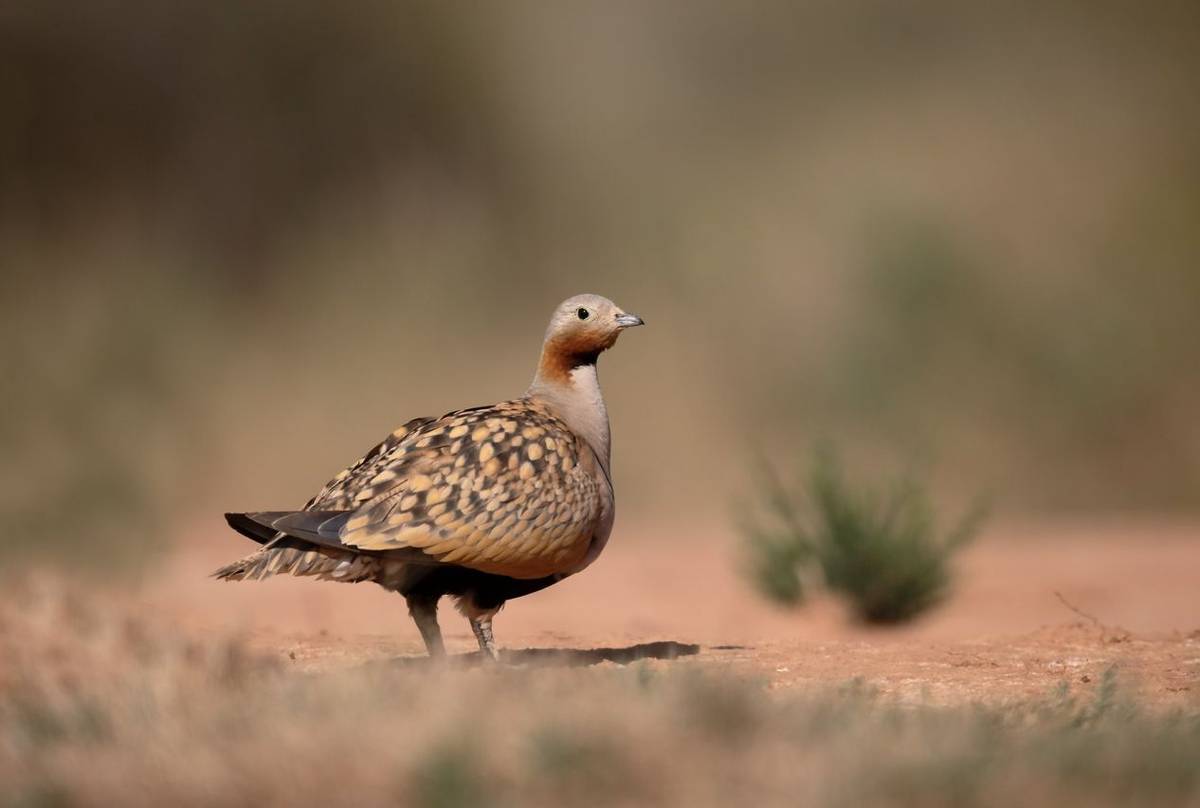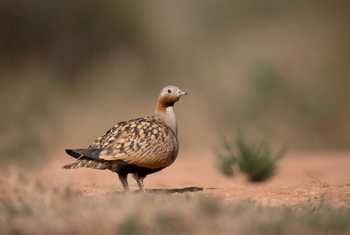Well organised, good pace, excellent tour leaders who were very helpful, well informed, caring and patient. Excellent hotels with lovely food. All in all a very positive first experience. Naturetrek organised every aspect of the trip from airport transfers to hotels to transport so there was nothing for us to worry about or plan, which made for a very enjoyable experience.
A.S. Surrey, Dec 21



Tour Itinerary and Reports
- Itinerary
- Tour report - December 2024
- Tour report - December 2023
- Tour report - December 2021
- Tour report - December 2019
- Tour report - December 2018
- Tour report - December 2018
- Tour report - December 2017
- Tour report - December 2016
- Tour report - December 2016
- Tour report - December 2015
- Tour report - December 2015
- Tour report - December 2014
- Tour report - December 2014
- Tour report - December 2013
- Tour report - December 2013
Click to see moreClick to see less
Can I help you?
Portugal - The Algarve at Christmas
Tour Code: PRT09A relaxing 8-day holiday focusing on the best of the Algarve's birdlife in winter, with one or two treats thrown in!
£2,095
£1,795
Highlights
Tour Itinerary and Reports
- Itinerary
- Tour report - December 2024
- Tour report - December 2023
- Tour report - December 2021
- Tour report - December 2019
- Tour report - December 2018
- Tour report - December 2018
- Tour report - December 2017
- Tour report - December 2016
- Tour report - December 2015
- Tour report - December 2016
- Tour report - December 2015
- Tour report - December 2014
- Tour report - December 2014
- Tour report - December 2013
- Tour report - December 2013
Click to see moreClick to see less
Can I help you?
Quick Enquiry
Summary
There's a growing appetite among Naturetrek clients to get away somewhere interesting at Christmas, and this 8-day holiday in south-west Portugal has been picked to offer two lovely hotels (one with stunning sea views), some decent December weather and plenty of bird and wildlife interest. Based for four nights at the Memmo Baleeira Hotel, situated just a stone's throw from a fort which served as Henry the Navigator's 15th century School of Navigation, and for three nights in the hills north of Tavira, we will make daily excursions along the coast and into the neighbouring Alentejo region. Close to our Sagres hotel are the spectacular cliffs of Cabo Sao Vicente, Portugal's "Land's End". The winter warmth and Portuguese traditional hospitality should leave us with a healthy glow in our cheeks as we head home!
- Little Bustard, Red-billed Chough & Black Redstart among the resident birds
- Explore coastal wetlands & lagoons for wintering waders, raptors & other birds
- Greater Flamingoes & Eurasian Spoonbills at Castro Marim
- Little Stint, Marsh Harrier & Booted Eagle winter along the coast
- Day trip to look for Great Bustard & Black-bellied Sandgrouse in Alentejo
- Led by expert naturalist guide
There is a keen appetite amongst Naturetrek clients to get away to somewhere interesting at Christmas — our short-haul programme over the festive season often sells out months in advance! We look for a destination that combines some genuinely warm hospitality and plenty of interest from a bird and wildlife perspective, with some decent December weather to boot ... and the Algarve fits the bill perfectly.
Lying at the far south-western tip of mainland Europe, Portugal’s beautiful Algarve region makes for an ideal short-haul midwinter getaway. Famous for its golf courses, beaches and winter sunshine, there is another side to the Algarve, away from the high-rise hotels and beach-bound holidaymakers, and on this tour we will take you off the tourist trail, to the windswept cliffs, sand dunes and heaths of the west coast, the marshes and saltpans of the south, and the Cork Oak forests and wide open plains of the Alentejo. A relaxed pace of life prevails away from the tourist hotspots and we are sure that you will soon be seduced by southern Portugal — not only by its excellent birdwatching opportunities, but also by its beautiful language, charming people, and delicious food and wine.
Our base for four nights will be the wonderful Memmo Baleeira Hotel, situated just a stone’s throw from a fort which served as Henry the Navigator’s 15th century School of Navigation. Comfortable, clean rooms are enhanced by a breathtaking modern design and, with outstanding views over the Sagres coastline, this hotel provides a relaxing and welcoming retreat.
Close to our hotel are the spectacular cliffs and wild surfing beaches of Cabo de São Vicente — Portugal’s and mainland Europe’s ‘Land’s End’! Here, Little Bustard, Red-billed Chough, Peregrine Falcon, Blue Rock Thrush and Black Redstart are all resident, and in winter there are usually a few Alpine Accentors to be found. Seawatching from the cliffs may reveal Sooty Shearwater, European Storm Petrel and both Great and Arctic Skua. Razorbills often winter in this area, together with the odd Puffin and Audouin’s Gull. Cetaceans are not as numerous as earlier in the year, but we can nevertheless hope to see at least one of the following: Common Dolphin, Bottlenose Dolphin or Harbour Porpoise.
Our next base is up in the hills above Tavira, in the central Algarve. The Parque Nacional da Ria Formosa, just to the south, consists of coastal lagoons, vast areas of tidal-flats, saltpans and saltmarsh that are enclosed by a belt of sand-dune islands and peninsulas. This is a great site for wintering birds from northern Europe, especially waders such as Black-tailed Godwit and Little Stint. Marsh Harriers are resident and Booted Eagles are regular in winter.
The Castro Marim wetland nearby is a complex system of creeks and natural saltmarsh as well as man-made saltpans. This is an important site for wintering Greater Flamingoes and Eurasian Spoonbills, and it is perhaps the only site in Portugal where Lesser Short-toed Larks may regularly be found. Numbers of Blacknecked Grebes winter here, together with a few Stone Curlews.
Although further away, we may also drive north for a day to the wide plains of Castro Verde in the Alentejo. Within the Castro Verde Special Protection Area we will hope to see Europe’s largest flying bird, the Great Bustard, as well as Little Bustard and Blackbellied Sandgrouse. Several exciting raptors hunt over these open plains and we will survey the rugged steppe country from the region’s highest point, Sierra de Aracelis, for Black and Griffon Vultures, Hen Harrier and the magnificent Spanish Imperial Eagle. Whatever birds we see, the hospitality of our hosts at this special time of year, together with a glimpse of winter warmth, should see us heading home with a healthy glow in our cheeks!
Outline Itinerary

What's Included?
- Flights
- Accommodation:
A 2-centre holiday, based in comfortable hotels. All rooms have private facilities.
- Food:
Food and wine all included in the price.
Reviews
-
-
A two centre holiday over Christmas spent in two fabulous hotels with lovely food and wine. The guides were excellent very caring and knowledgeable. The birds were fantastic, I’ve never seen so many little bustards in one place before, that’s just one example of the quality and quantity of the birds in the Algarve that we saw. Entirely possible due to the guides. We had to take covid tests but this was done very professionally. I would thoroughly recommend this holiday. The offices of Naturetrek kept us regularly informed regarding the covid situation and everything pertaining to the trip. Everything was arranged perfectly.
J.A. Nottinghamshire, Dec 21 -
This was our first tour with Naturetrek and we were very impressed. We saw all the birds we wanted to see and much more besides. The hotels were very good, as was the food, and the picnics organised by the Leaders were incredible. Both Leaders went out of their way to make sure we saw everything and that we were enjoying ourselves. Looking forward to our next trip (Borneo).
L.W. West Midlands, Dec 19 -
This was the best organised bird watching holiday we have had. Both leaders were delightful - patient, very knowledgeable and took great pains to ensure everyone saw the birds, especially seeking out all our favourite target birds.
CH & RH, Surrey, Dec 19 -
I thoroughly enjoyed the holiday. Everything was well organised from start to finish. Robert and Neil were brilliant leaders who were friendly, easy to get on with, and so knowledgeable. They spotted birds so quickly and I saw so many birds that I would not have seen if they had not been there to point them out. I can't praise them enough, they were both excellent and looked after us very well.
CG, Oxfordshire, Dec 19 -
A week of warm sunshine,in excellent accommodation, being taken to amazing scenic areas, seeing birds from Great Bustards to Little Bittern and more than 100 other species, in good company, was the perfect way to spend Christmas.
J.M. Hampshire -
The hotel was excellent and their food the best we've encountered on a Naturetrek trip.
Mr & Mrs F. Shropshire -
Wonderful. Well researched sites with an abundance of opportunities for seeing all kinds of birds. Guides always willing to listen to special requests and respond. Some very memorable sightings.
J.R. London -
This trip fulfilled our expectations. A very good holiday in an excellent hotel and pleasant weather. A good way to spend Christmas in convivial company.
D.R. Clyde -
Very good itinerary. Nuno's local knowledge was very useful. He also was able to plan itinerary according to weather. Both leaders were excellent - very good knowledge of natural history.
M.A. Greater Manchester -
I had been on the Naturetrek 'Spring in the Algarve' trip but I was amazed at the sheer variety of birdlife at this time of year, feeling that I had seen more species of birds in a huge variety of habitats. There was always something to see, the group mix was excellent and both Stuart and Jill went the extra mile to ensure that we were all included and able to view the birds.
J.W. Hampshire
Dates & Prices
2026
Prefer to Travel in a Private Group?
For any interested natural history club or society, we can arrange for a private departure of this tour.
Enquire
Tour Reports
- Tour report - December 2024
- Tour report - December 2023
- Tour report - December 2021
- Tour report - December 2019
- Tour report - December 2018
- Tour report - December 2018
- Tour report - December 2017
- Tour report - December 2016
- Tour report - December 2016
- Tour report - December 2015
- Tour report - December 2015
- Tour report - December 2014
- Tour report - December 2014
- Tour report - December 2013
- Tour report - December 2013
CLICK TO SEE MOREClick to see less
Why Naturetrek?
At Naturetrek we craft expertly-guided group and tailor-made wildlife holidays and cruises to all seven continents. On one of our holidays, you can be assured that our passionate team will enable you to experience and enjoy the best of the world's wildlife and natural spectacles in as comfortable and rewarding a manner as possible, caring as best we can for the environment in the process. We are proud to provide:
- The widest choice of wildlife holidays worldwide
- Tours managed and led by naturalists, for naturalists
- Outstanding value and exceptional customer service
Furthermore, as a Naturetrek client, our office team are always to on hand to help you – so if you have any queries about your holiday, whether before or after you have booked, we will be delighted to answer them on the phone. Please just give our team a call!
Related articles
In this article, we share our best options for a Christmas Wildlife Holiday in 2024/2025.
Video



 Loading search...
Loading search...
















